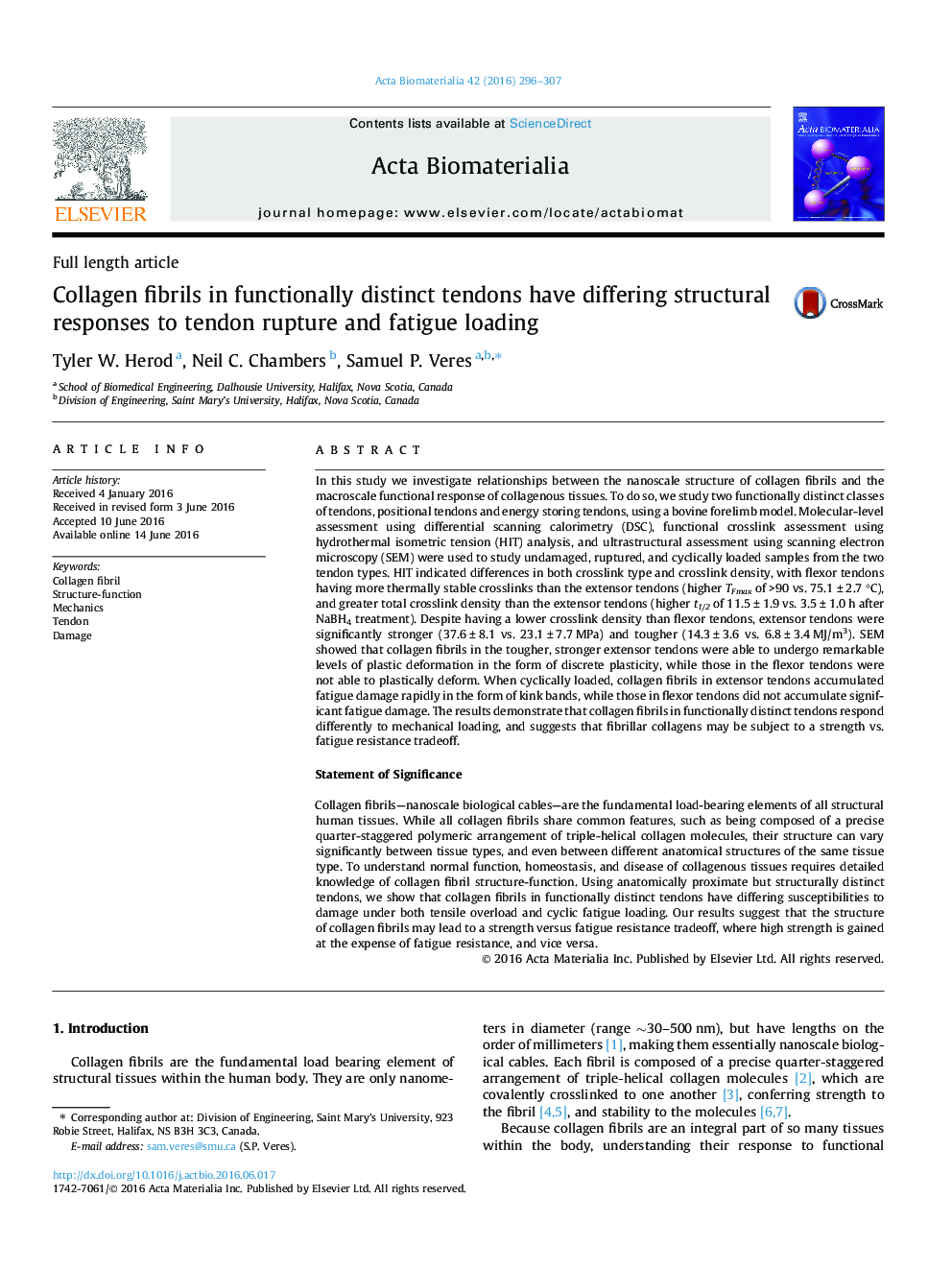| Article ID | Journal | Published Year | Pages | File Type |
|---|---|---|---|---|
| 6450241 | Acta Biomaterialia | 2016 | 12 Pages |
In this study we investigate relationships between the nanoscale structure of collagen fibrils and the macroscale functional response of collagenous tissues. To do so, we study two functionally distinct classes of tendons, positional tendons and energy storing tendons, using a bovine forelimb model. Molecular-level assessment using differential scanning calorimetry (DSC), functional crosslink assessment using hydrothermal isometric tension (HIT) analysis, and ultrastructural assessment using scanning electron microscopy (SEM) were used to study undamaged, ruptured, and cyclically loaded samples from the two tendon types. HIT indicated differences in both crosslink type and crosslink density, with flexor tendons having more thermally stable crosslinks than the extensor tendons (higher TFmax of >90 vs. 75.1 ± 2.7 °C), and greater total crosslink density than the extensor tendons (higher t1/2 of 11.5 ± 1.9 vs. 3.5 ± 1.0 h after NaBH4 treatment). Despite having a lower crosslink density than flexor tendons, extensor tendons were significantly stronger (37.6 ± 8.1 vs. 23.1 ± 7.7 MPa) and tougher (14.3 ± 3.6 vs. 6.8 ± 3.4 MJ/m3). SEM showed that collagen fibrils in the tougher, stronger extensor tendons were able to undergo remarkable levels of plastic deformation in the form of discrete plasticity, while those in the flexor tendons were not able to plastically deform. When cyclically loaded, collagen fibrils in extensor tendons accumulated fatigue damage rapidly in the form of kink bands, while those in flexor tendons did not accumulate significant fatigue damage. The results demonstrate that collagen fibrils in functionally distinct tendons respond differently to mechanical loading, and suggests that fibrillar collagens may be subject to a strength vs. fatigue resistance tradeoff.Statement of SignificanceCollagen fibrils-nanoscale biological cables-are the fundamental load-bearing elements of all structural human tissues. While all collagen fibrils share common features, such as being composed of a precise quarter-staggered polymeric arrangement of triple-helical collagen molecules, their structure can vary significantly between tissue types, and even between different anatomical structures of the same tissue type. To understand normal function, homeostasis, and disease of collagenous tissues requires detailed knowledge of collagen fibril structure-function. Using anatomically proximate but structurally distinct tendons, we show that collagen fibrils in functionally distinct tendons have differing susceptibilities to damage under both tensile overload and cyclic fatigue loading. Our results suggest that the structure of collagen fibrils may lead to a strength versus fatigue resistance tradeoff, where high strength is gained at the expense of fatigue resistance, and vice versa.
Graphical abstractDownload high-res image (320KB)Download full-size image
